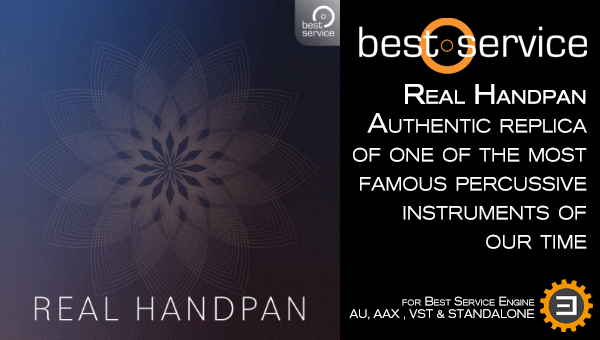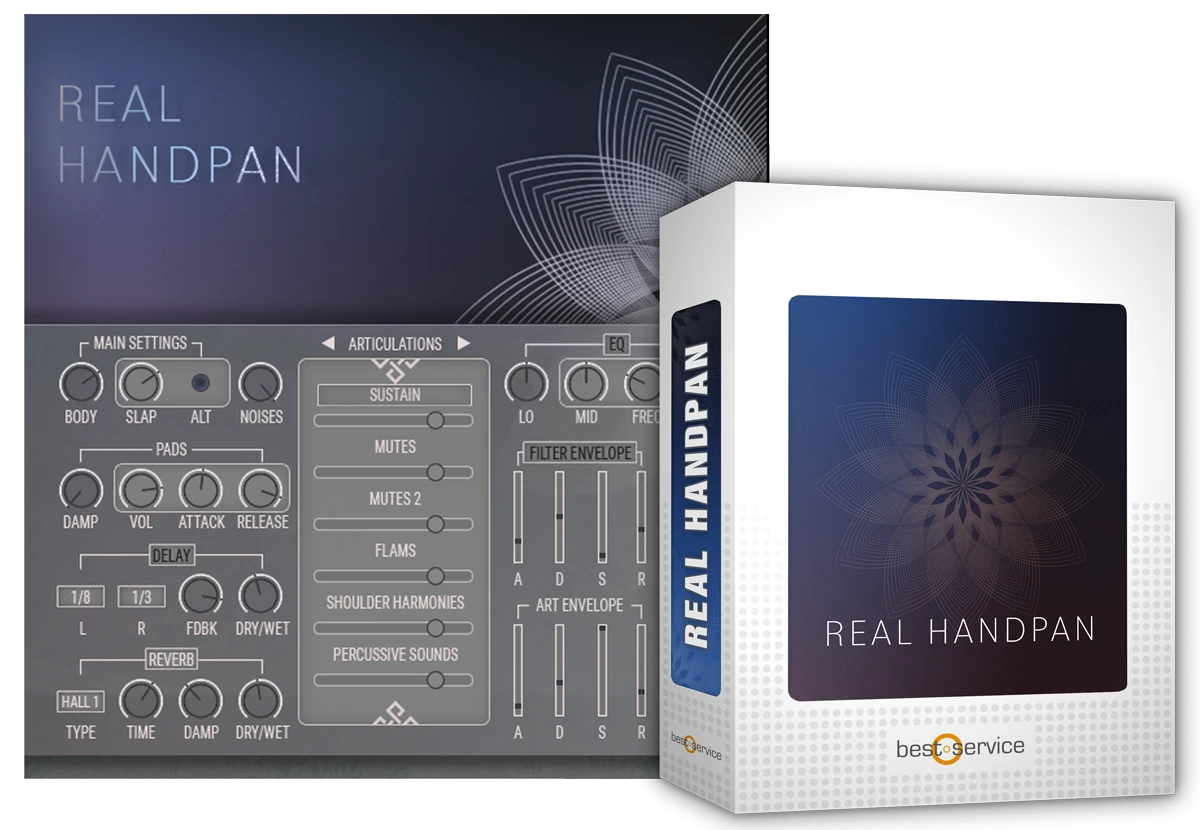
Authentic replica of one of the most famous percussive instruments of our time
Despite the fact that the Handpan was first introduced in early 2000, it has become one of the best-known percussive instruments of the modern era. Based on the Caribbean Steel Drums and the Indian Ghatam, the Handpan offers a distinctive sound that will enhance your virtual instruments collection.
The realistic sounding virtual instrument, featuring various playing styles, was created in cooperation with handpan pioneer Wolfgang Ohmer. Thanks to his experience, the unique sonic character of the handpan was captured in full detail.
The sampled instrument is in the key of D minor (Kurd 9), accordingly the percussive sounds are predominantly in the key of D, while all basic playing techniques such as sustain can be played chromatically. In addition to an accurately sampled instrument, the library offers switchable pad sounds, modulation options and effects for creating stunning soundscapes.
Articulations
Real Handpan contains the most important playing techniques to compose incredibly realistic melodic and rhythmic passages, triggered by keyswitches. Thanks to many years of experience as a Handpan player, Wolfgang Ohmer understands how to use the special sound characteristics of the instrument to its full potential. With up to 57 velocity groups per key, Real Handpan reproduces them in great detail.
- Sustain: Tone field attack with the fingertip, starting at the round inner edge of the tone field (dimple) with increasing intensity more towards the harder sounding outer edge.
- Mute 1: Soft attack on the damped tone field.
- Mute 2: Hard attack on the damped tone field.
- Flam: Short “drum roll” with the fingertips, at higher velocities with the fingernails (rasgueado).
- Shoulder Harmonies: Sounds played with knuckles between the tone fields.
- Percussion: Sounds played in the area around the central dome, produced with various striking techniques.

Pads
The pad section is made up of 6 pad sounds specially tuned to the handpan, these can be blended individually or in combination with the original sound. This allows you to quickly create a background atmosphere that accompanies the melodies and harmonies being played. The first three pads are created using the handpan itself, while pads 4 to 6 are based on synthesis.
- Particles Pad: This exciting pad contains long phrases randomly varying the intensity of the key played, which is great for backing up melodies and sustained chords with a long release.
- Soft Pad: The atmospheric sound of a Handpan arises among other things from the fact that the sound vibrations in the sound body reverberate, as with a piano played with sustain pedal. The Soft Pad is a good way to emulate this effect.
- Reverse Pad: Soft handpan sustains played backwards – highly recommended in combination with Particles Pad and a long release.
- Warm Pad: Soft synth pad that sounds an octave lower than the handpan, great for quiet, slow passages. With DAMP in the PADS settings you can make the pad sound even softer.
- Synth Pad 1: Overtone-rich synth pad that sounds an octave lower than the Handpan. In combination with Warm Pad you can create interesting sound variations.
- Synth Pad 2: Related to Synth Pad 1, but sounding an octave higher, this pad offers the brightest sound and is well suited in the mix with the other pad sounds as well as “solo” in conjunction with
the Handpan.
Modulations and Effects
Thanks to built-in effects and modulation controls, Real Handpan includes powerful tools for sound design. Create exciting ambiences using the delay, filter, EQ and reverb and change the sound of the Handpan with just a few clicks. In addition, you can change the envelope of all pads globally and also control the main envelope of the articulations. There are no limits to your imagination here.
The Artist
Wolfgang Ohmer works as a composer and multi-instrumentalist in various projects from pop, ambient to world music. Since acquiring his first handpan (PANArt-Hang) in 2011, his compositions mainly focus on handpan sounds. He has released several albums and EPs.
